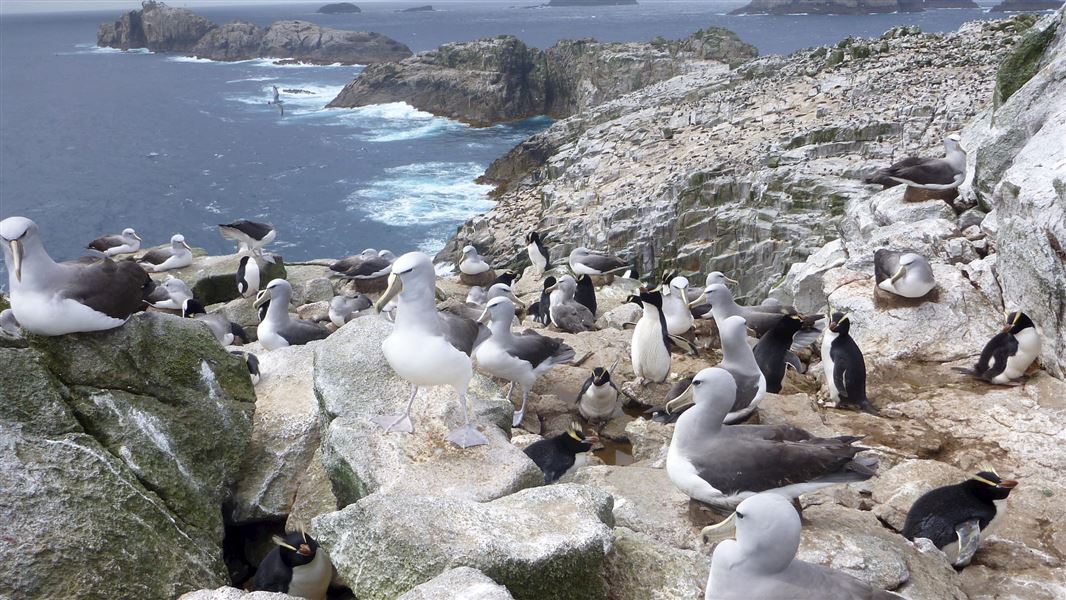Scientific name: Thalassarche salvini
Population: Unknown
New Zealand status: Endemic
Conservation status: Nationally critical
Other names: Salvin's mollymawk, Grey-backed albatross
Primary threat: bycatch
Species information: Salvin's albatross on NZ birds online
Basic information
Length: 90 to 100 cm
Weight: 3.4 to 4.4 kg
Food: fish, squid, krill, salps and offal from fishing vessels.
Distribution
Salvin’s albatross breeds on:
- Bounty Islands (nine islands and islets)
- Western Chain islets (Snares Islands)
- The Pyramid and The Forty-Fours (Chatham Islands), and
- has bred at least once on Ile des Pingouins (Crozet Islands, French Southern Territories) with four pairs recorded (Jouventin 1990, Brooke 2004).
At-sea distribution of Salvin’s albatross is based mostly on sightings and recoveries from fishing vessels. Salvin’s albatross commonly occur throughout coastal New Zealand, and across to south-east Australian waters during the breeding season (August-April). After breeding the Salvin's albatross usually migrates to seas off the coast of Peru and Chile.
Challenges
The main challenges are:
- information on population size and trend, breeding dynamics, survival rates, and diet is almost non-existent, and
- that we don't know much about the different age classes and different stages of the annual cycle of birds at sea.
What we're doing to learn more
A three-year study began in October 2008. This study looked at the birds' population size and at-sea distribution of the birds in Snares Islands. We did this by counting the breeding pairs and putting geolocator loggers on 35 breeding birds.
Current efforts
We recently teamed up with NIWA (National Institute of Water and Atmospheric Research) to better understand these birds. We're now using GPS Argos tags to see what these birds do around New Zealand, Chile and Peru. This also helps in tracking where they interact with fishing vessels in the high sea.
How you can help
You can help by:
- letting DOC know if you find sick or injured albatrosses
- checking legs of dead albatrosses for metal leg bands
- reporting the band number or combination if you spot the birds during pelagic or fishing trips.
What to do if you find a banded bird and how to let DOC know
